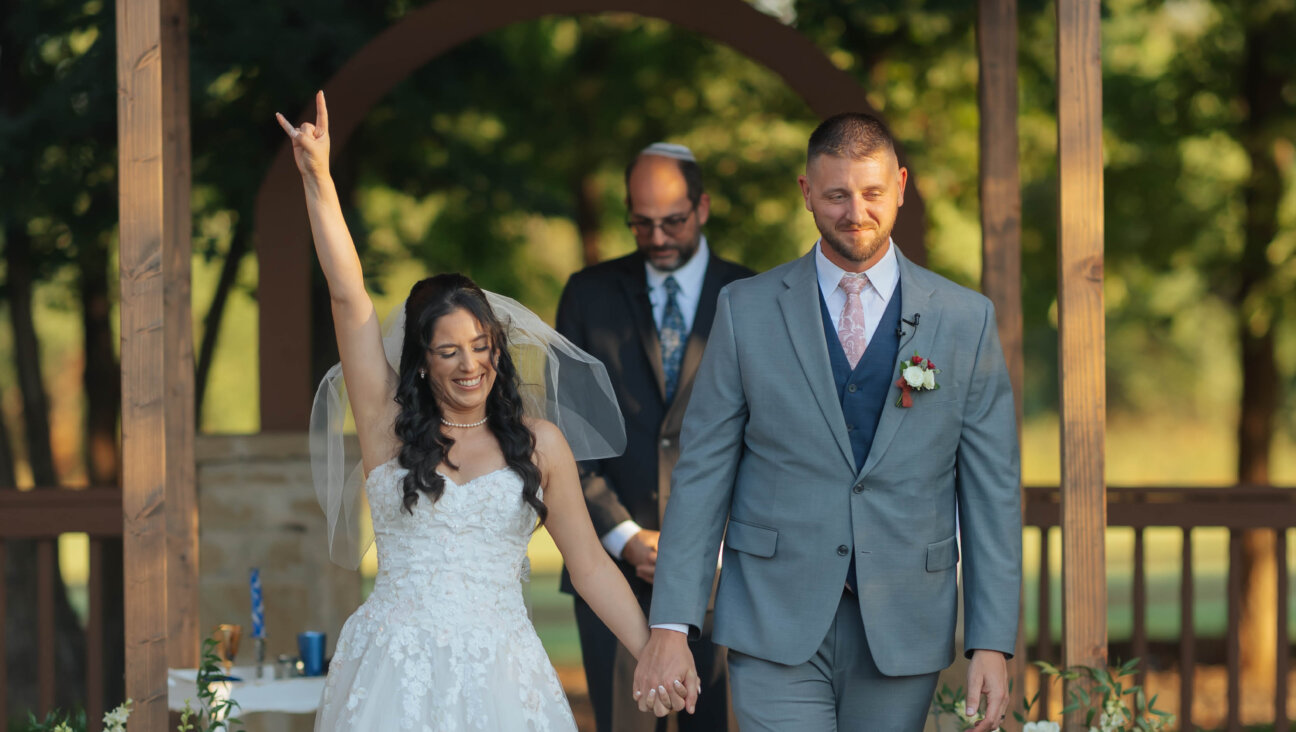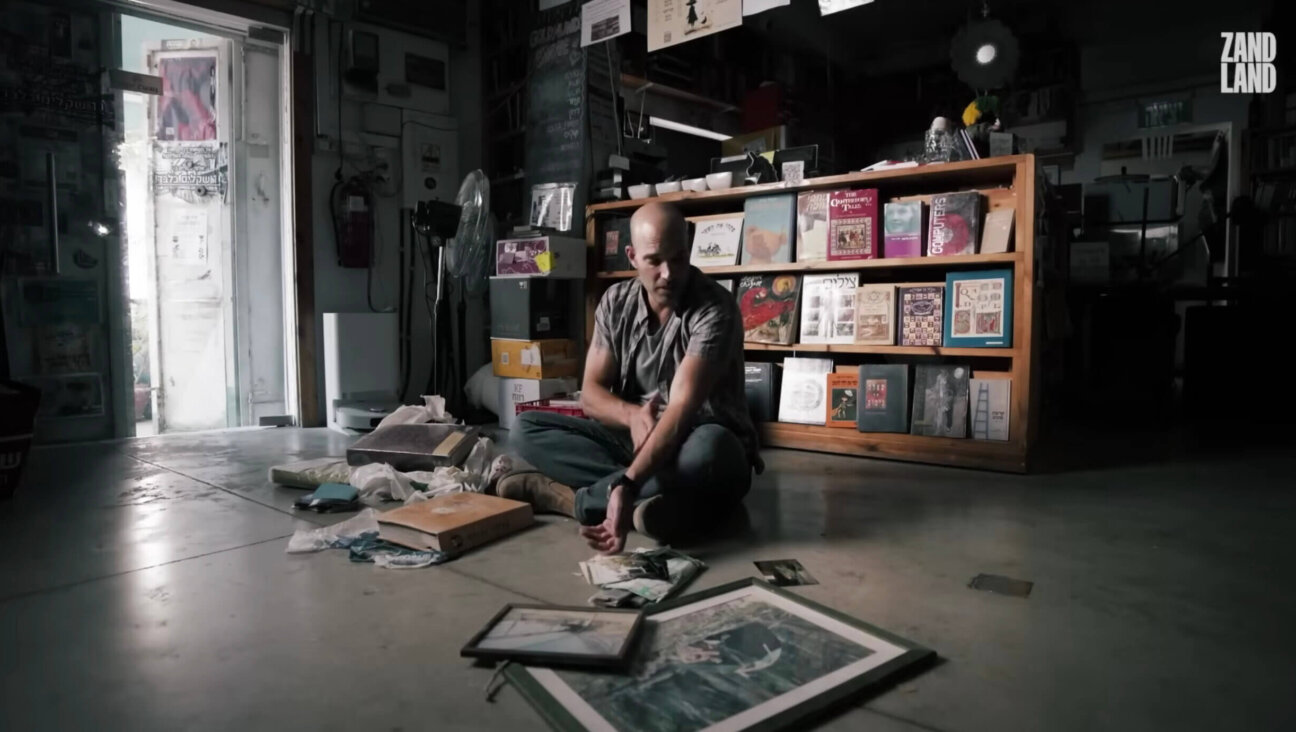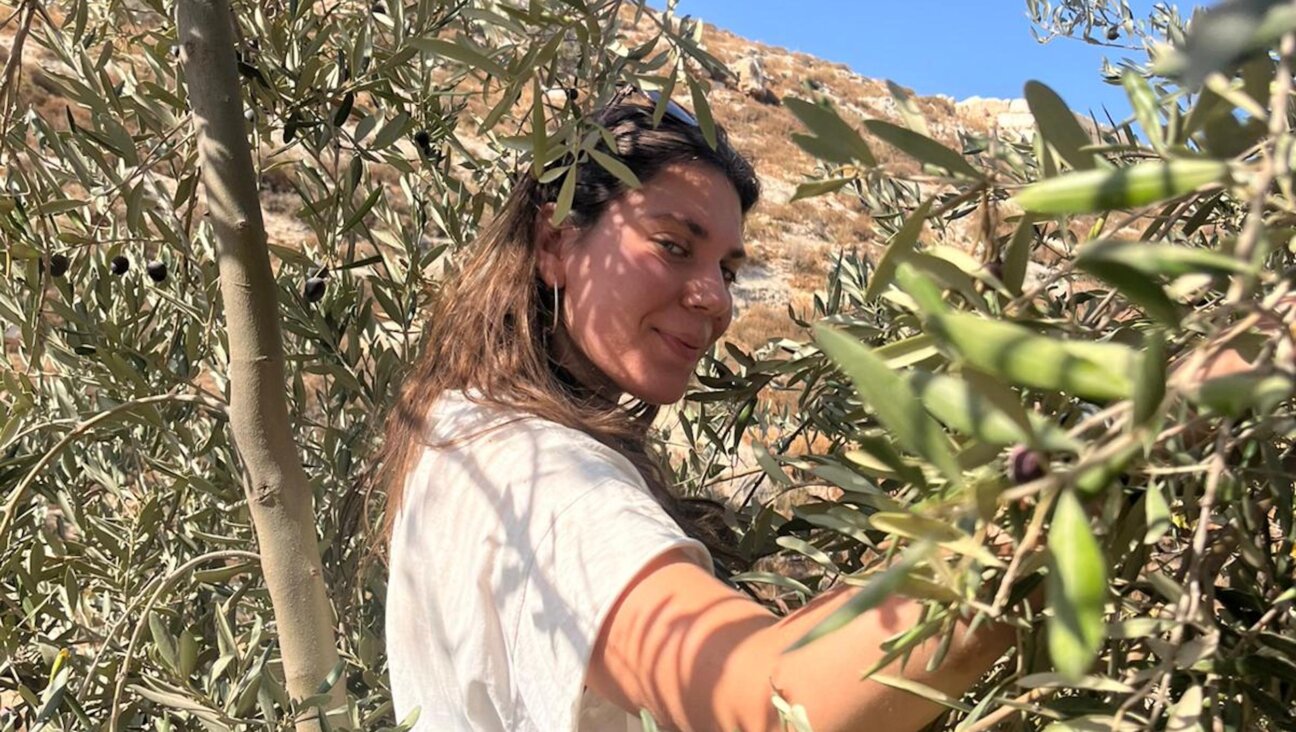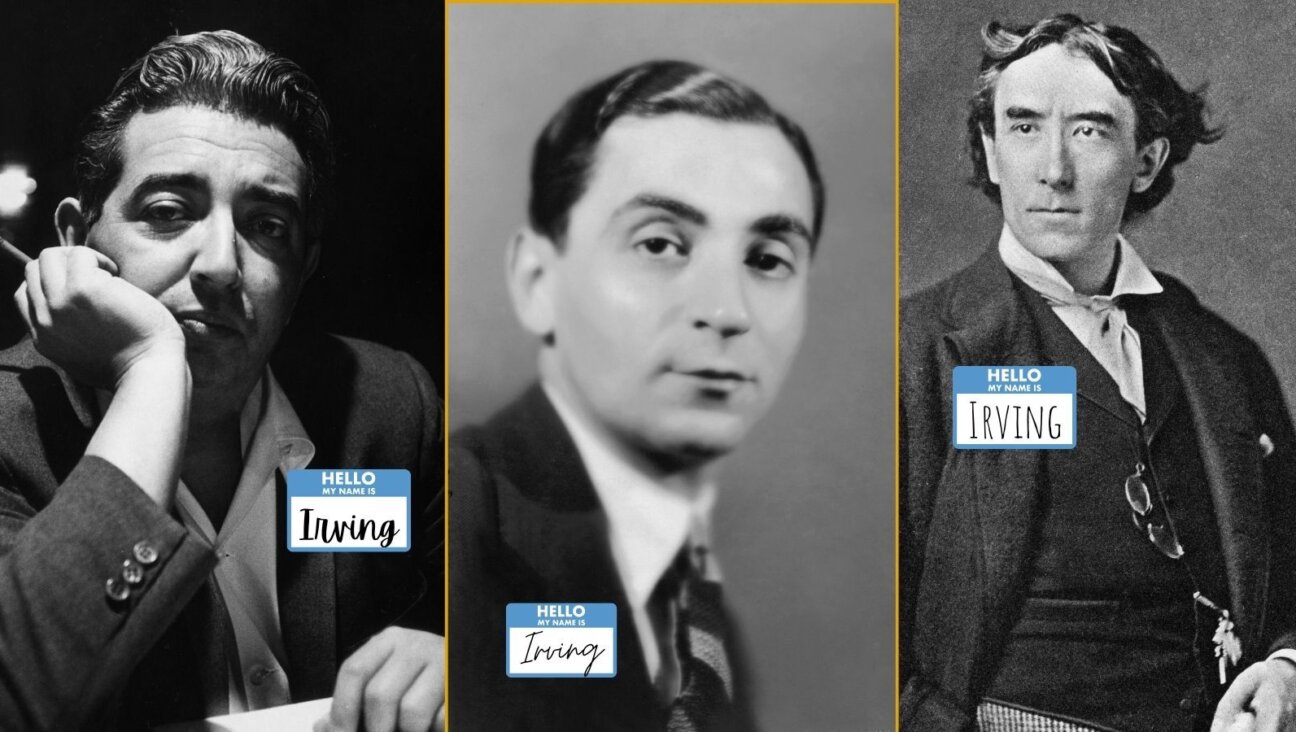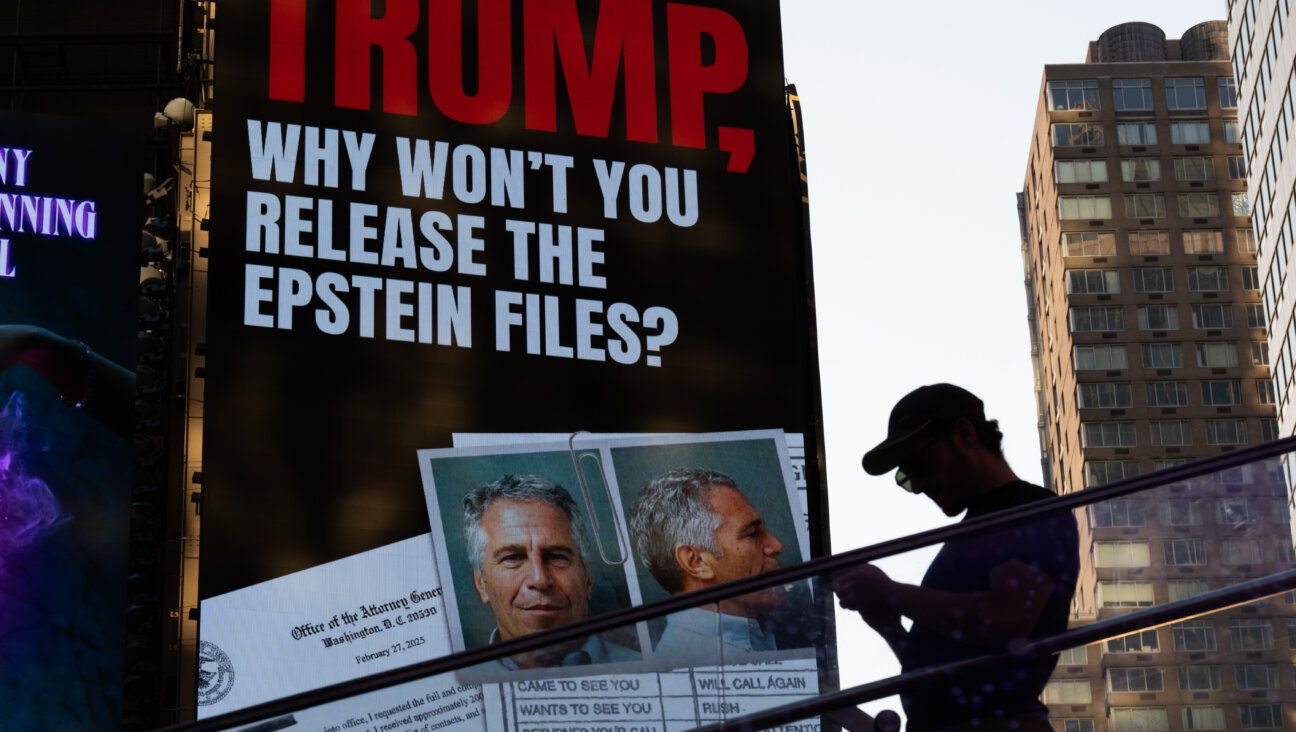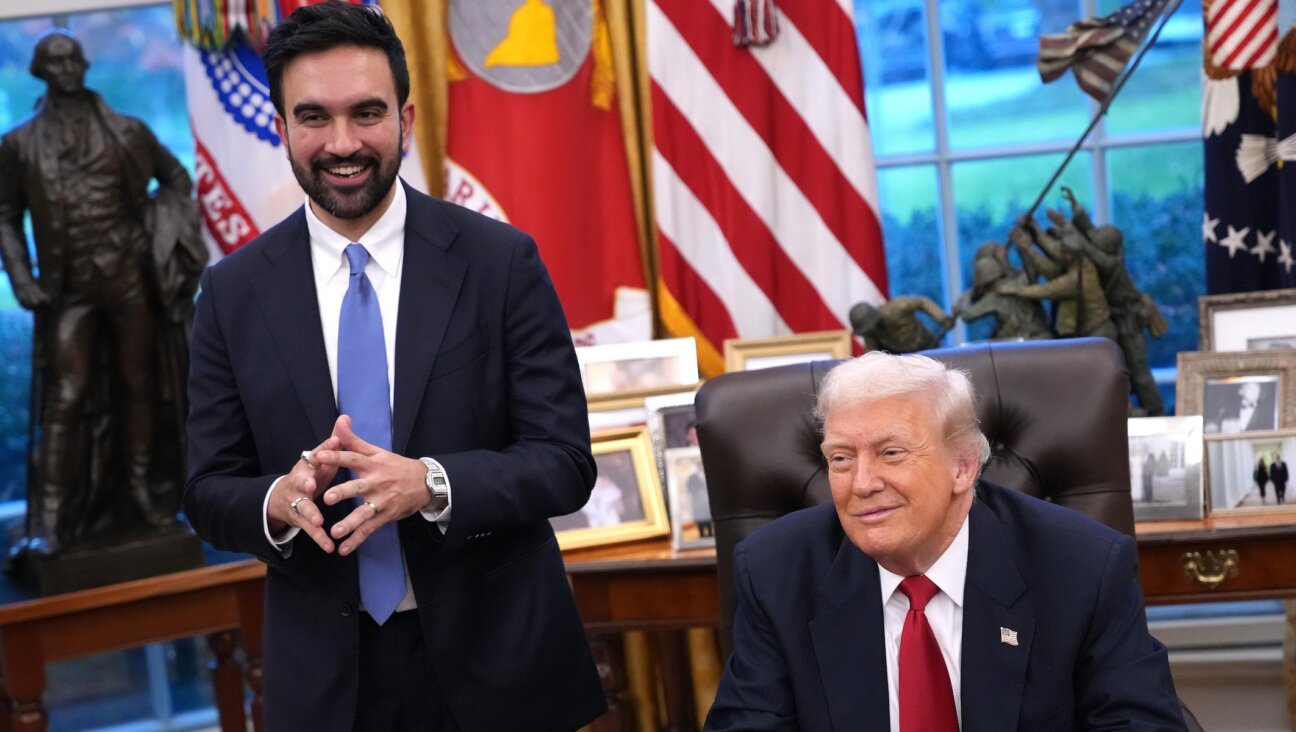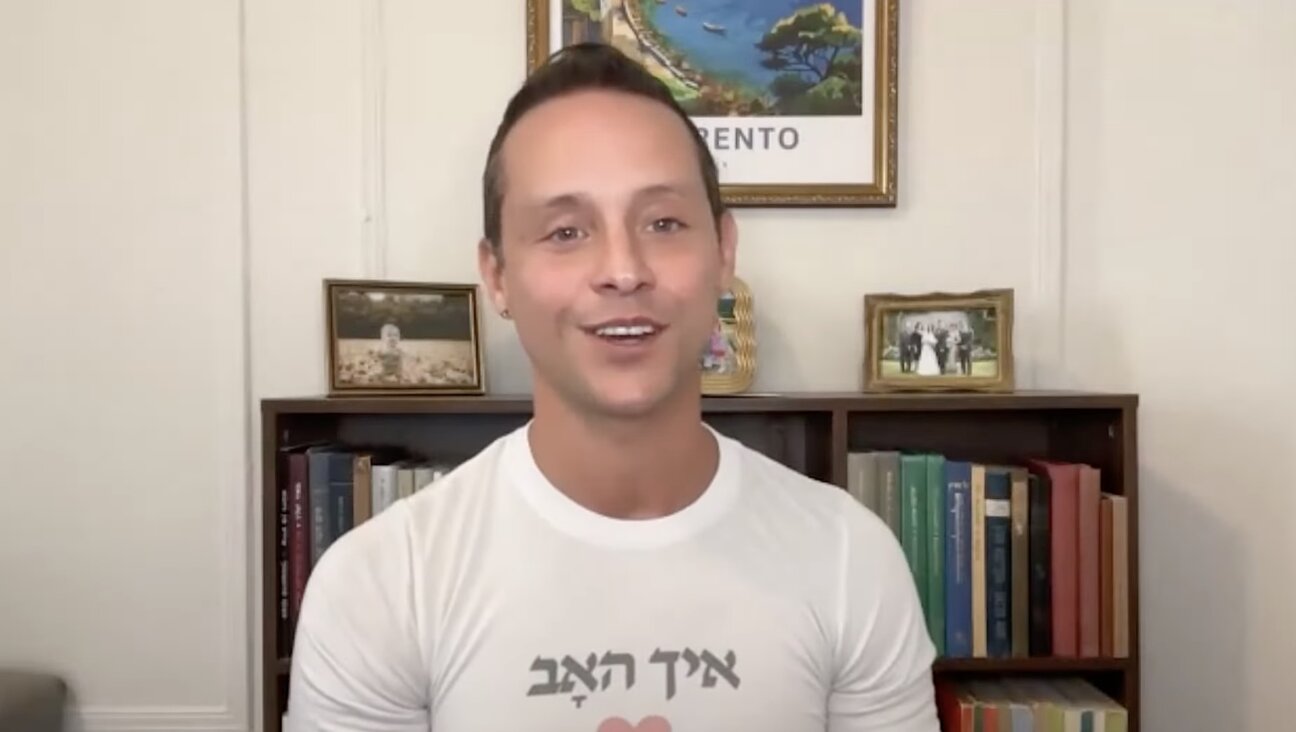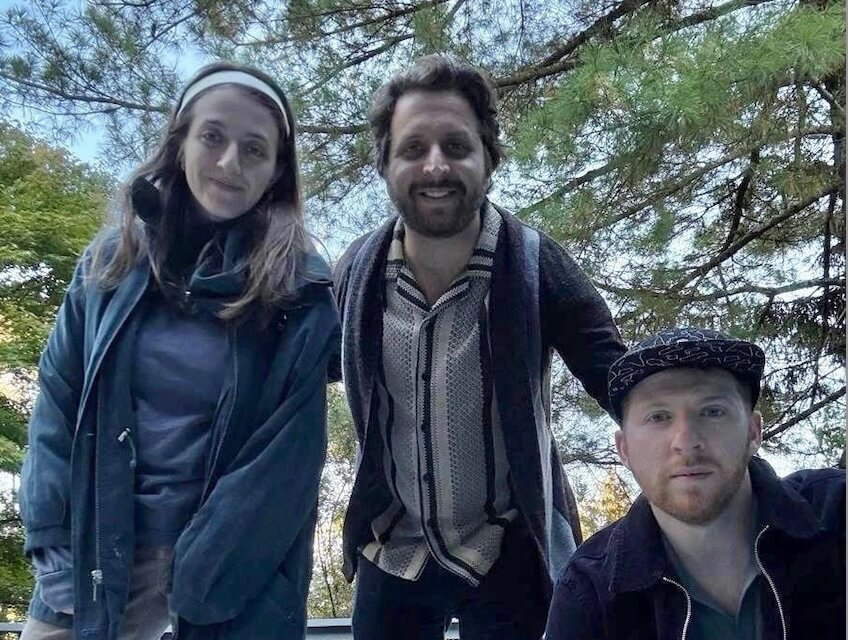Close Encounters of the Steven Spielberg Kind in Arizona

Horror Hits Home: Producer and uncredited director Steven Spielberg (far left) on the set of ‘Poltergeist’ with director Tobe Hooper, actors James Karen and Craig T. Nelson in 1982. Image by Getty Images
During the seven years that the four Spielberg siblings lived in Phoenix, Arizona, they didn’t always get to sleep through the night. Often, when there was a meteor shower or comet, their father Arnold would get Steven, Anne, Sue and Nancy out of their beds, and drive them in his Jeep to the desert around Phoenix. “We would go out in our pajamas,” remembers Nancy Spielberg, the youngest, who was just 7 months old when the family moved to Phoenix in February 1957, “and have a light shower.”
At that time, Phoenix was still a relatively small city; its night sky was clear of dust and smog, and perfect for stargazing. What Nancy recalls as fond early childhood memories had a more profound impact on her brother Steven, nine years her senior and the oldest of the siblings. It triggered in him a fascination with extraterrestrial life, and inspired his first feature-length movie, “Firelight,” which he made as a high school student in Arizona.

Child Star: Nancy Spielberg, the youngest sibling, plays the little girl in 'Firelight.' Image by Youtube
The Spielbergs moved from Haddon Township, New Jersey, to Sun Valley, Idaho for career purposes, as Arnold Spielberg — a radio operator for the Army and the Air Corps during World War II — took a job as an engineer for General Electric. They arrived right at the beginning of the city’s postwar boom.
The advent of air conditioning in the early 1950s made the desert climate bearable, drawing technology companies and veterans who had trained at the vast facilities in the area. Phoenix grew from roughly 107,000 inhabitants in 1950 to 439,000 in 1950.
The Spielbergs settled in the rural, middle-class neighborhood of Arcadia, which is celebrating its centennial this year. The neighborhood took its name from the ancient Greek city of Arcadia, reputed to be a place of uncommon peace and quiet. In June 1915, the first tract of land platted in this area was recorded: It was called Citrus Homes, as the neighborhood was originally developed as small citrus orchards. The original Arcadia development was first recorded four years later; the generously sized lots were aimed to attract wealthy homeowners. (Anyone wanting to build a house had to satisfy a minimum cost of development and the requirement that the house’s exterior design fit the existing neighborhood’s aesthetic norms.) By the mid-1950s, most of the citrus farms turned into estates. “We had wonderful orange trees — Steven loved to take the rotten ones that had fallen off and practice his pitching — by making us his human targets,” remembers Sue Spielberg, the second youngest sibling, a promotional consultant who now lives in Maryland, in an email to the Forward. The Spielberg family home was a newly built ranch-style, one level house. “A typical fun summer activity — we’d run from tree to tree while he’d try to hit us with the oranges!”

Image by Kurt Hoffman
While the family adapted to the new environment in some ways, they stood out in others. “The neighbors called us dirty Jews,” said Nancy Spielberg, who is a documentary filmmaker (she most recently produced “Above and Beyond,” a documentary about foreign airmen volunteering in Israel’s 1948 War of Independence) and philanthropist. “We weren’t one of them.”
Even though the Spielbergs were self-described “five times a year Jews,” they felt a sense of otherness. The Spielbergs endured bullying and anti-Semitic remarks, and there were few other Jews around. “I’m not thinking of anyone else who might have been Jewish,” said Chuck Chase, who was in the school band with Spielberg, in which both played clarinet (“I don’t recall either of us playing it particularly well”), when asked about Spielberg’s Judaism. “It was not something that was on my radar.”
Like much of the rest of the state, Arizona’s Jewish population was already well into its growth phase, after numbers had been fluctuating throughout the late 19th and early 20th century. The mining booms after 1850 brought the first Jewish businesspeople, who came from California. In 1877, a grand total of 48 Jews lived in the Arizona territory. The first Jewish community emerged in Tombstone four years later. By the end of the century, the Jewish population had grown steadily to 2,000 people, but shrunk again to 500 in 1907. Numbers increased in the decades leading up to World War II, with people moving to the region for its dry heat, which was considered beneficial to the health. The establishment of an air force base in Tucson during the war and the influx of people after 1945 led to further growth. By 1971, Arizona counted 21,000 Jews. Today, Phoenix-Mesa-Glendale is the country’s 13th-largest Jewish metropolitan area, with almost 83,000 Jews — but back when the Spielbergs settled there, it was, and must have felt, much smaller.
A skinny, Jewish kid with an East Coast accent, who at various times called himself a nerd and a wimp, might not be considered the prototypical Arizona Boy Scout member — but preteen Spielberg joined his local group anyway, in 1958. And one might not consider scouting, with its outings and physical challenges, a typical breeding ground for a filming career — but for Spielberg, it worked out because he wanted to gain a photography merit badge, as Joseph McBride writes in “Steven Spielberg: A Biography.”

Young Talent: Most of the actors in Steven Spielberg's 'Firelight' were schoolmates who had been involved in a high school musical production with Spielberg. Image by Youtube
Spielberg had been playing around with his father’s 8mm film camera for a while (a $20 Kodak Brownie he had received as a gift from his wife), and became obsessed with filming everyday family life. “My dad filmed camping trips [and made] very boring movies. And then my brother said, ‘Dad, give me the camera,’” said Nancy.
For the merit badge, his father encouraged him to film a short Western. The cast consisted of his fellow Scout members, and the story line was simple. It mostly involved fighting, complete with ketchup as blood. Nevertheless, it was enthusiastically received by Spielberg’s fellow scouts, and led him to take the camera along to every scout trip and to use the camera to entertain himself and his siblings. “Our mother allowed [him] to turn the house into a movie set,” remembers Nancy. “He started making movies and that was our activity. We were the actors, gaffers, script girls… My brother became popular when we started making movies and put people in the movies.”
Still in primary school, Spielberg made another movie two years later. “Fighter Squad” was a 15-minute black-and-white movie that featured, once again, lots of fighting, this time in vintage fighter planes, which he shot at the local airport. Making movies about World War II was a natural choice at that time, Spielberg recalled later, because many fathers, including his own, had fought in the war; in many homes, wardrobes were filled with uniforms and other props. In some of his projects, his peers wore their father’s uniforms, Marshall recalls.
It’s perhaps hardly surprising that Spielberg’s early filming attempts always featured Germans, and never Japanese as the enemies. After all, it was in Arizona where Spielberg first saw Holocaust footage at school, in the 1956 TV documentary “The Twisted Cross.” Even though he had been in contact with survivors before, he later told reporters that this was when the stories of the horrors became real to him — which would inspire him to make “Schindler’s List,” one of the most famous Holocaust movies of all time that won him seven Oscars.
At his 1961 graduation from elementary school, the class came up with 50-year prophecies for each other. Spielberg, someone predicted, would be the “producer of Smell-o-Rama Productions.” By that time, he was far from the only kid who was fascinated by filmmaking, according to McBride. Several of his friends were doing their own amateur movie projects, as many parents in the comfortable neighborhood owned 8mm or 16mm cameras. Home moviemaking was still a relatively expensive hobby at that time. Even though Kodak had introduced 16mm film in 1923, and 8mm film in 1932, the true home movie revolution was yet to come: In 1965, Kodak introduced Super 8, which was easier to use.

Winning War: 'Escape to Nowhere' won Spielberg a prize at an 1963 amateur film festival. Image by Youtube
In 1961, after he entered Arcadia High School as a freshman, it soon became clear that he cared about little else than moviemaking. He would carry the film camera around everywhere he went, and even faked illness to stay at home and edit his projects, McBride writes — such as “Escape from Nowhere,” a 40-minute silent movie that would pave the way for his first feature-length film. The World War II drama (depicting American soldiers surrounded by Germans in North Africa) won him the first prize at the 1962-63 Canyon Films Junior Film Festival, an amateur film festival, which got him his own film equipment (a Bolex H8 Deluxe, a Bolex projector, and a Bolex Sonorizer that allowed him to record sound) and made it possible for him to embark on his most ambitious project during his time in Arizona: the two-hour movie “Firelight.”
For the movie, Spielberg tapped many of the teenagers who had been involved in the school musical production of “Guys and Dolls” with him — such as Warner Marshall, who today lives in Connecticut and still acts in church acting groups. Spielberg wrote a 67-page screenplay; the story line bears many resemblances with his 1977 movie “Close Encounters of the Third Kind”: A little girl (played by sister Nancy) is abducted by a mysterious red light descending from the sky. A scientist, his wife, and an obsessed UFO expert try to prove the existence of extraterrestrial life.

Early Encounters: A still from 'Firelight.' Steven Spielberg created the red light effect by using a red gel on a white light. Image by Youtube
Only a few minutes of the footage remain as Spielberg gave the reel to a production company that went bankrupt in the 1970s. But the clips that are accessible on YouTube are remarkable: It’s hard to guess that the red light effect was created by using a red gel on a white light, or that, as Marshall recalls, a clothing line with Christmas lights was moved to make it appear as if a couple was sitting in a driving car, with houses passing by at night.
The high-school-aged cast, many members of which also doubled as production assistants, met on afternoons and weekends over several months in 1963 to film at various locations in and near Phoenix.
“[Steven Spielberg] was quite persuasive,” Marshall remembers, when it came to gaining permission to film. At the Phoenix airport, Spielberg was allowed to film at the hallways and gates, simply after asking to be allowed to do so.
What Chuck Chase, who later went on to became a lawyer and judge in Arizona (“When you’re in the courtroom, most of what you’re doing is acting anyway”), remembers most vividly is the time the youngsters spent dubbing the dialogue after Spielberg had edited the movie on his own: “We sat in the living room and he showed the picture up on the screen and dubbed it into a tape recorder.” Adds Marshall: “It was a pretty concentrated time.”
With a budget of roughly $500, “Firelight” became Spielberg’s first ever commercially successful movie, as it was screened once in March 1964 at the Little Theatre in Phoenix — where, as Marshall recalls, Spielberg had to press the recorder at the right time to keep the sound in sync with the film. With a ticket price of $1, Spielberg ended up basically breaking even

Image by Youtube
Spielberg’s time in Arizona ended the day after, when his family moved to California — another step closer to Hollywood, which, as it became increasingly clear, would be his destination. But the mood of suburban life, as the Spielbergs experienced it in Phoenix, is captured in many of Spielberg’s films: The bustling living room in “Close Encounters” recalls the Spielbergs’ home in Arcadia. And might the kids cycling in “E.T.” have been the Spielberg siblings? The theme of an alien force upsetting family life by exposing internal tensions seems to point toward another aspect of the Spielberg family life in Arizona: Arnold Spielberg and Leah Adler Posner divorced two years later, in 1966.
Every year for Passover, the four siblings, along with their spouses, children and grandchildren reunite with their parents (who are now 98 and 95) at a kosher hotel in Arizona. “The original family back to the original scene of the crime,” said Nancy. “We drive by our old houses, stand outside, and smell the orange trees.”
This year, the Spielberg Seder comprised around 20 people, spanning four generations — and the family performed the same routine, save for a special visit to Arcadia. According to Sue Spielberg, “We four siblings and our mom went to visit our old neighborhoods and took a trip back in time when the owner let us in to see our childhood home. Same windows, same front door, same kitchen cabinets.”
A trip back in time to a more peaceful place — it sounds like it could be something out of a Spielberg movie.
Anna Goldenberg is the Forward’s culture fellow.

